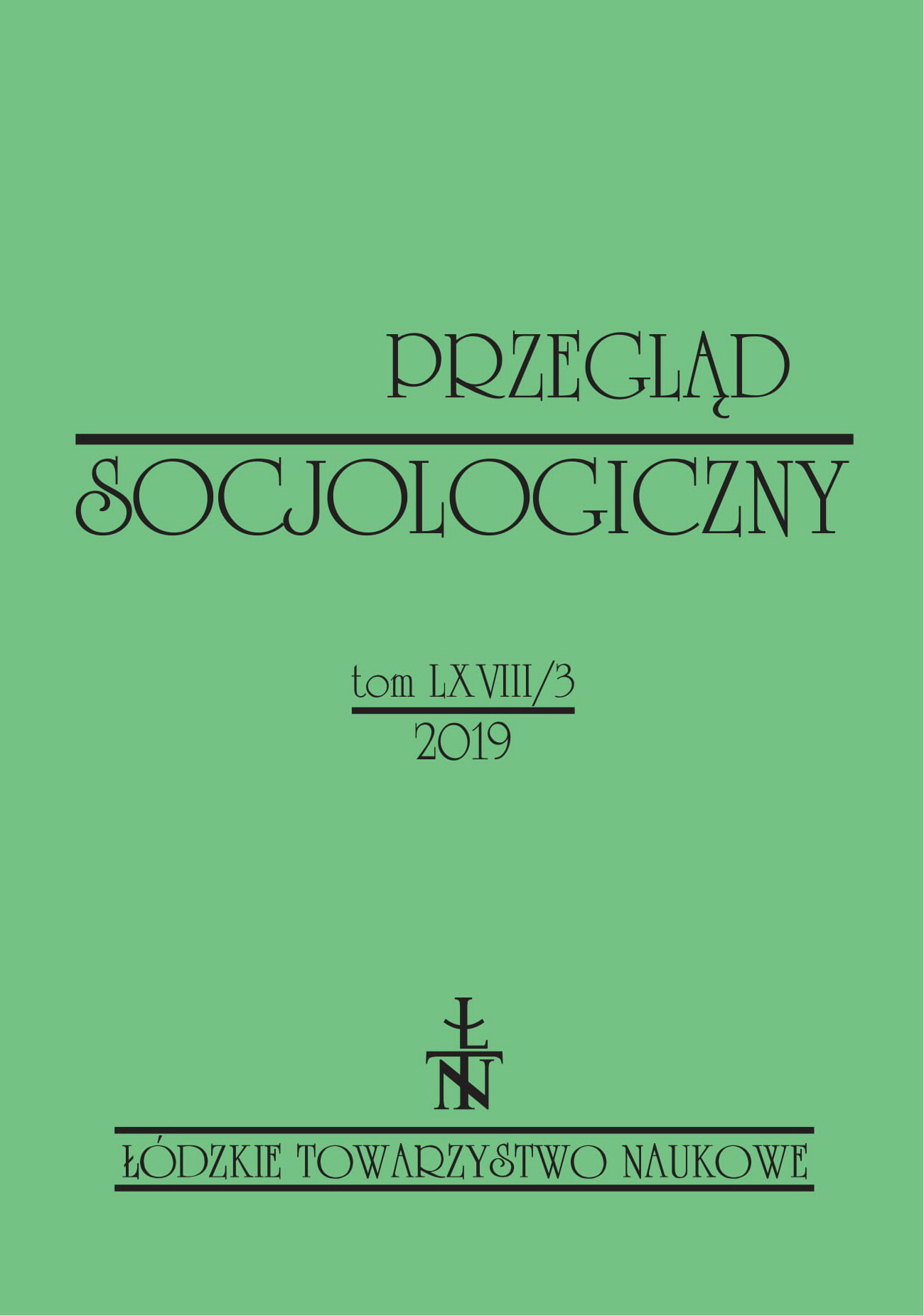The effects of visual and aural communication on the quality of survey measurement. The proposition of a new theoretical approach to survey mode preference on the basis of the working memory concept
DOI:
https://doi.org/10.26485/PS/2019/68.3/8Keywords:
working memory, survey mode preference, satisficing, survey research methodologyAbstract
The aim of the article is to present a potential direction for the development of survey design research. It tries to describe the possibility of building a concept that integrates the observed consequences of survey mode preference – its impact on the response rate and the quality of responses – using the cognitive concept of working memory. It indicates the existence of a potential relationship between the aging process, or anxiety, and the diversification of information processing efficiency in the visual and aural modalities, and thus outlines the problems facing researchers planning mixed-mode surveys, especially in aging western populations.
References
Cialdini Robert. 1984. Influence: The new psychology of modem persuasion. New York: Quill.
Clearman Jack, Vojtěch Klinger, Dénes Szűcs. 2017. “Visuospatial and verbal memory in mental arithmetic”. Quarterly Journal of Experimental Psychology 70(9): 1837–1855.
Constantinidou Fofi, Susan Baker. 2002. “Stimulus modality and verbal learning performance in normal aging”. Brain and Language 82(3): 296–311.
Dillman Don A., Jolene D. Smyth, Leah Melani Christian. 2014. Internet, phone, mail, and mixed mode surveys: The tailored design method (4th ed.). Hoboken: John Wiley & Sons Inc.
Diment Kieren, Sam Garrett-Jones. 2007. “How demographic characteristics affect mode preference in a postal/web mixed-mode survey of Australian researchers”. Social Science Computer Review 25(3): 410–417.
Groves Robert M., Mick P. Couper. 1998. Nonresponse in household interview surveys. New York: John Wiley & Sons.
Groves Robert M., Robert L. Kahn. 1979. Surveys by telephone : a national comparison with personal interviews. New York: Academic Press.
Groves Robert M., Eleanor Singer, Amy Corning. 2000. “Leverage-saliency theory of survey participation”. Public Opinion Quarterly 64(3): 299–308.
Haan Marieke, Yfke P. Ongena, Kees Arts. 2014. “Reaching hard-to-survey populations: Mode choice and mode preference”. Journal of Official Statistics 30(2): 355–379.
Ikeda Maki, Makoto Iwanaga, Hidetoshi Seiwa. 1996. “Test anxiety and working memory system”. Perceptual and Motor Skills 82(3): 1223–1231.
Jabkowski Piotr. 2015. Reprezentatywność badań reprezentatywnych: analiza wybranych problemów metodologicznych oraz praktycznych w paradygmacie całkowitego błędu pomiaru. Poznań: Wydawnictwo Naukowe Uniwersytetu im. Adama Mickiewicza.
Krosnick Jon. 1991. “Response strategies for coping with the cognitive demands of attitude measure in surveys”. Applied Cognitive Psychology 5: 213–236.
Krzewińska Aneta, Katarzyna Grzeszkiewicz-Radulska. 2013. „Klasyfikacja sondażowych technik otrzymywania materiałów”. Przegląd Socjologiczny 62(1): 9–32.
Kumar Navnit, Brajesh Priyadarshi. 2013. “Differential effect of aging on verbal and visuospatial working memory”. Aging and Disease 4(4): 170–177.
Medway Rebecca L., Jenna Fulton. 2012. “When more gets you less: A meta-analysis of the effect of concurrent web options on mail survey response rates”. Public Opinion Quarterly 76(4): 733–746.
Miller Heather, Jacqueline Bichsel. 2004. “Anxiety, working memory, gender, and math performance”. Personality and Individual Differences 37(3): 591–606.
Meyer Maciej. 2007. „Herbert Simon i jego idea ograniczonej racjonalności”. Decyzje 7: 111–115.
Olive Thierry, Ronald Kellogg, Annie Piolat. 2008. “Verbal, visual, and spatial working memory demands during text composition”. Applied Psycholinguistics 29(4): 669–687.
Olson Kristen, Jolene D. Smyth, Heather M. Wood. 2012. “Does giving people their preferred survey mode actually increase survey participation rates? An experimental examination”. Public Opinion Quarterly 76(4): 611–635.
Pham Andy V., Ramzi M. Hasson. 2014. “Verbal and visuospatial working memory as predictors of children’s reading ability”. Archives of Clinical Neuropsychology 29(5): 467–477.
Piotrowski Krzysztof, Zbigniew Stettner, Jarosław Orzechowski, Robert Balas. 2009. Jak działa pamięć robocza? W: Pamięć robocza. J. Orzechowski i in. (red.), 25–46. Warszawa: Wydawnictwo Szkoły Wyższej Psychologii Społecznej Academica.
Rybak Adam. 2018. „The selection of survey modes on the basis of respondents’ preferences analysis”. Ask: Research and Methods 27(1): 23–39.
Sakshaug Joseph W., Ting Yan, Roger Tourangeau. 2010. “Nonresponse error, measurement error, and mode of data collection: Tradeoffs in a multi-mode survey of sensitive and nonsensitive items”. Public Opinion Quarterly 74(5): 907–933.
Smyth Jolene D., Kristen Olson, Alian Kasabian. 2014. „The effect of answering in a preferred versus a non-preferred survey mode on measurement“. Survey Research Methods 8(3): 137–152.
Smyth Jolene D., Kristen Olson, Morgan M. Millar. 2014. „Identifying predictors of survey mode preference“. Social Science Research 48: 135–144.
Sztabiński Franciszek. 1990. Proces komunikowania się w ankiecie pocztowej. Prezentacja schematu. W: Analizy i próby technik badawczych w socjologii. Z. Gostkowski (red.), T. VIII, 59–97. Wrocław–Warszawa–Kraków: Ossolineum.
Sztabiński Franciszek. 1997. Ankieta pocztowa i wywiad kwestionariuszowy. Warszawa: Wydawnictwo IFiS PAN.
Sztabiński Franciszek. 2011. Ocena jakości danych w badaniach surveyowych. Warszawa: Wydawnictwo IFiS PAN.
Sztabiński Paweł. 1995. „Efekt ankieterski: czy zmienia się tylko respondent”. Ask. Research & Methods 1(1): 81–99.
Tahmasbipour Najaf, K. Ahmady. 2011. “The investigation of prevalence rate and diagnosis of exam anxiety risk factors among Shahid Rajaee University students (SRTTU)”. Procedia– Social and Behavioral Sciences 30: 717–721.
Tourangeau Roger, Lance J. Rips, Kenneth A. Rasinski. 2000. The psychology of survey response. Cambridge: Cambridge University Press.
Vannieuwenhuyze Jorre T.A., Melanie Revilla. 2013. “Evaluating relative mode effects on data quality in mixed-mode surveys”. Survey Research Methods 7(3): 157–168.
Verma Santosh K., Theodore K. Courtney, David A. Lombardi, Wen Ruey Chang, Yueng
Hsiang Huang, Melanye J. Brennan, Melissa J. Perry. 2014. “Internet and telephonic IVR mixed-mode survey for longitudinal studies: Choice, retention, and data equivalency”. Annals of Epidemiology 24(1): 72–74.



